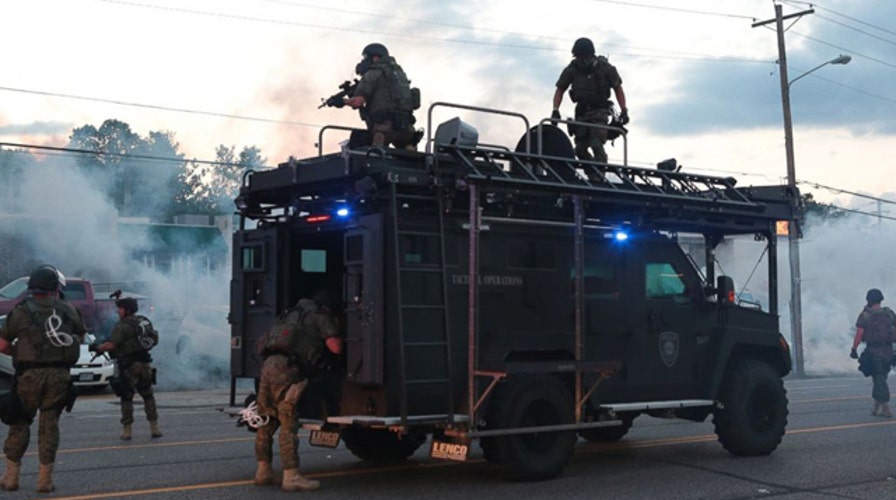Militarization of police force a problem in the US?
'Outnumber' panel debate issue in wake of Ferguson violence
WASHINGTON – From California to Connecticut and several states in between, local police departments have been steadily arming themselves over the years with billions of dollars' worth of military-grade equipment -- including grenade launchers, helicopters and machine guns.
The materiel comes from a U.S. military program that, until this week, received little public attention. But after St. Louis police used heavy-duty equipment in putting down riots and protests following the shooting death of an unarmed teen, new questions have been raised about where this gear is coming from.
The flood of equipment being funneled from the Department of Defense to local police departments traces back to a program created in the 1990s. The excess property program, known as 1033, was initially created to help state and local authorities in the war against drugs, and help unused military equipment find a home -- as opposed to being needlessly destroyed.
But the flow of equipment from the military to towns across America has spiked since the 9/11 attacks. And it's become a thorny topic among critics who say local authorities shouldn’t be outfitted with heavy machinery originally bought by the government to fight actual wars and track terrorists overseas.
In Missouri, police used some of this gear to respond to looters and protesters following Saturday’s police shooting of 18-year-old Michael Brown.
Missouri public safety officials confirmed that six .45-caliber pistols, 12 rifles, one helicopter, one explosive ordinance disposal robot, one industrial-strength face shield and two night-vision goggles were among the items local law enforcement agencies received from the feds.
On the surface, the program is a good deal for cash-strapped local governments and one the Pentagon calls "useful." The 1033 program allows the secretary of Defense to “transfer, without charge, excess U.S. Department of Defense personal property (supplies and equipment) to state and local law enforcement agencies,” according to the National Law Enforcement and Corrections Technology Center.
Local enforcement agencies can look through an online catalog to purchase items like small arms and tents. Getting a tank or military aircraft requires a small amount of extra work -- authorities need to fill out a one-page request form, specifying if they prefer the vehicle with wheels or tank tracks.
Delivery can take up to 14 days.
In its first year, the military transferred about $1 million worth of equipment. Since then, the 1033 program has transferred more than $4.3 billion in equipment. Last year, it gave away close to a half-billion dollars' worth of equipment to local law enforcement, according to a June report from the American Civil Liberties Union.
While some say the program helps cash-strapped local forces, others argue that sending small communities a cache of weapons may not be the best idea.
The police chief in Keene, N.H., for example, requested an armored vehicle to patrol the town’s “Pumpkin Festival and other dangerous situations,” according to a report in The Economist. Keene has a population of around 23,000.
Authorities in Fargo, N.D., asked the government for, and received, an armored personnel-carrier with a rotating turret.
The sheriff’s department in Montgomery County, Texas, owns a pilotless surveillance drone similar to the kind the military uses to track terrorists in the tribal regions of Pakistan.
According to the ACLU report, Arizona has received the largest collection of weapons to date. The Maricopa County Sheriff’s Office was gifted 10 helicopters, five armored vehicles and 120 assault rifles, according to the ACLU report.





